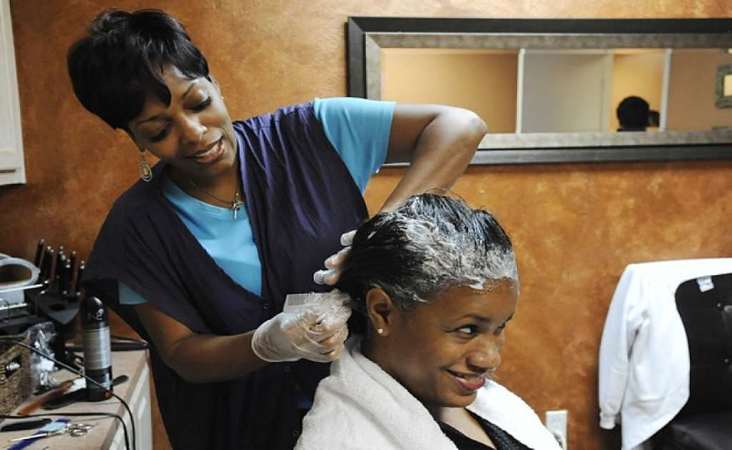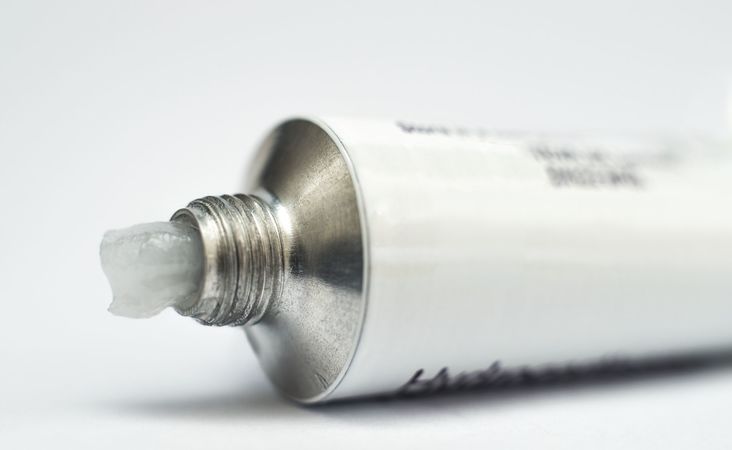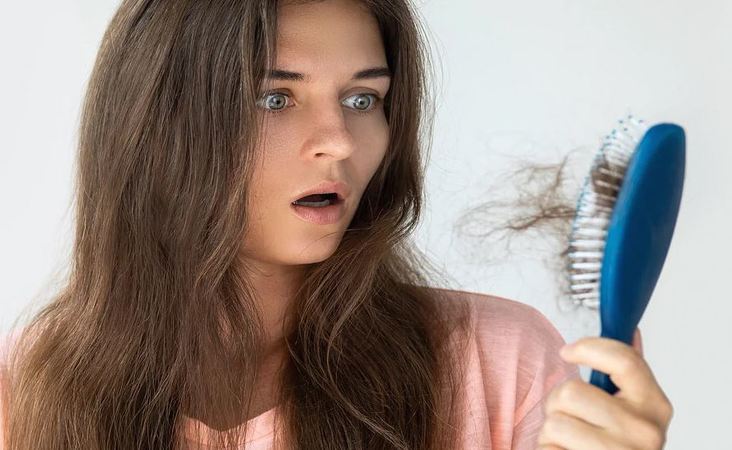CCCA Alopecia Hair Loss: Meaning, Symptoms, and Treatments
- Written by Lordhair Team
- Apr 17, 2021
- |
- 11 min read
 Listen to the full text
Listen to the full textFrom medical conditions to stress, hormonal changes, and styling damage, there are a lot of things that can trigger hair loss in women. CCCA alopecia hair loss is one of them. Tens of thousands of women - especially middle-aged black women - are affected by this hair loss condition every year.
Due to a lack of knowledge about CCCA alopecia, a lot of women fail to take the right recovery measures on time. In this blog, Lordhair will share you everything critical about CCCA alopecia hair loss. From meaning to symptoms and causes to treatments, we have tried to cover every important aspect of this hair loss condition.
First, let us understand what exactly CCCA hair loss is.
What is CCCA alopecia hair loss?
Central centrifugal cicatricial alopecia (CCCA) is a chronic and progressive type of scarring alopecia that causes permanent hair loss in middle-aged black women. CCCA hair loss typically starts around the center parting - the crown part of the scalp - and expands outward in a circular pattern. Though it usually spreads slowly, some women have experienced a rapid progression.
Being a common type of scarring alopecia, this damaging hair follicle condition has also been seen in men and people of other races but documented cases are few.
CCCA alopecia hair loss symptoms
Dermatologists state that central centrifugal cicatricial alopecia in women begins at the vertex and spread outwards in a centrifugal manner. One may witness the loss of the follicular opening by looking carefully at the scalp. Women suffering from CCCA alopecia hair loss may also find their scalp to appear shiny.
Other than the aforementioned clinical features, some women might see the following symptoms:
- Tenderness
- Scars
- Pain
- Pus of purulent discharge from the scalp
- Itching
- Formation of blisters
- Crusting
- Soft skin at affected areas
Lordhair recommends immediately seeing a dermatologist if you notice any symptoms from the above list.
Browse our complete range of hair systems and wigs for women
CCCA alopecia hair loss causes
The exact cause of CCCA hair loss is still unknown and probably is multifactorial. However, some scientists believe these factors to be the most probable causes of central centrifugal cicatricial alopecia in black women:
#1 Excessive heat
Abusing blow dryers and hair styling products not only increases the chances of CCCA alopecia hair loss but also aggravates the problem. Excessive heat is harsh on the hair, causes breakage, and makes the scalp vulnerable.
Human hair contains keratin proteins and hydrogen bonds. When we excessively use heat styling tools, they strip the hair of natural oils and proteins by breaking down its hydrogen bonds. It leads to irregular texture and makes the scalp prone to breakage. Not to mention, it forms scars on the scalp which is a symptom of central centrifugal cicatricial alopecia.

#2 Traction
This is a widely accepted cause of central centrifugal cicatricial alopecia hair loss in women. Hairstyles like tight ponytails, cornrows, extensions, and buns exert the force of constant hair pull to the hair follicles. Pulling on the hair repeatedly loosens the hair shaft in its follicle.
Some scientists say that hair follicles can become so damaged and scarred by certain hairdos that they stop producing new hair. Women who wear tight hairstyles all day long for many days might see little bumps on their scalp that look like pimples. If you go with any of the above hairstyles and are witnessing a lot of broken hair, consider it a sign of CCCA alopecia and consult a dermatologist immediately.
#3 Genetics
There are many documented causes of CCCA hair loss in women, and genetic disorders are one of them. Genetics disorders are triggered by androgen hormones in young women and senior ladies. According to scientists, these hormones modify proteins that are essential to the formation of hair. They also cut off the production of proteins which could result in permanent central centrifugal cicatricial alopecia hair loss.
Many genetic conditions not only affect the scalp but also influence other parts of the body. Women with genetics working against them will experience a general thinning of hair, especially over the top of their head or crown.
Everything you need to know about genetic hair loss.
#4 Fungal infections
Fungal infections like tinea capitis can also be a cause of centrifugal cicatricial alopecia hair loss in women. Also called ringworm, it is triggered by dermatophytic fungi that is capable of invading keratinized hair tissue. This infection is contagious. In other words, it is spread through contact with infected persons.
It can also be triggered by using hairbrushes, hats, towels, bedding, and toys of an already infected person. If not taken care of on time, this CCCA alopecia hair loss cause could result in permanent bald patches.
Is your partner losing hair too? Check out these male hair units
#5 Chemical relaxers
Another cause of CCCA alopecia hair loss, chemical relaxers contain Lye (NaOH) that damages the hair and scalp. Sure they straighten hair by penetrating the cuticle and protective layer of the hair shaft to loosen the natural curl pattern but they leave the hair weak, brittle, and prone to breakage.
Chemical relaxers if used too often could also burn your skin, causing permanent damage to the scalp and lead to lifetime hair loss.

If you have read all the above carefully, you now know:
- What is CCCA alopecia hair loss?
- What are the medical features and symptoms of CCCA hair loss?
- What are the causes of central centrifugal cicatricial alopecia?
Now, it’s time to shift to ‘Is it possible to treat CCCA alopecia hair loss?’
CCCA alopecia treatments
Unfortunately, central centrifugal cicatricial alopecia is progressive. It cannot be treated at all if no measures are taken on time. Therefore, early diagnosis of CCCA alopecia is important! By doing so, women could prevent further progression that often results in widespread, permanent hair loss.
Lordhair has prepared a list of some useful treatments that could help people prevent central centrifugal cicatricial alopecia hair loss at an early stage. Here are those treatments:
#1 Topical steroids
Potent topical steroids like clobetasol are highly effective in preventing CCCA alopecia hair loss and stimulating hair growth in black women. Research has shown that hair regrowth was stimulated in about 20 to 25% among women who used this medication as an ointment and in about 47% for women who used it as foam.
However, we highly recommend taking a prescription from a dermatologist as clobetasol has a share of its side effects. Here are some known side effects of this topical steroid:
- Burning, itching, swelling, or irritation of treated areas
- Dry or cracking skin
- Redness
- Crusting around hair follicles
- Spider veins
- Stretch marks
- Thinning skin
- Rash or hives
- Acne

#2 Hair transplantation
A popular treatment to cope with CCCA hair loss in women, hair transplants are done to add more hair to the area on the head that is balding because of central centrifugal cicatricial alopecia. It is done by removing hair from thicker parts of the scalp or body and transplanting them to the balding section of the scalp.
Hair transplants can cost anything between US$4000 and US$15000 per session. If gone bad, it could cause a lot of complications including numbness and lack of sensation on the treated areas of the scalp. Itching, inflammation, infection, and shock hair loss are some other complications that may develop.
#3 Hair wigs
Unlike clobetasol and hair transplant, hair wigs involve no complications and have zero side effects. They are a popular non-surgical way to recover from aggressive central centrifugal cicatricial alopecia hair loss. They are durable, breathable, and carry a skin-friendly base.
Thousands of women across the globe wear hair wigs and toppers to get back a full head of hair after losing them to CCCA alopecia. Whilst there are a lot of advantages of using a hair wig for women, below are the major ones:
- Quick results: Unlike the aforementioned hair gain solutions, hair wigs promise an instant change in the look. There is no waiting time for this hair recovery solution. All you need to do is buying a hair wig online, put it on your head, and you are good to go!
- Affordable price: Women who don’t want to spend a huge amount of money on treatments will find buying hair wigs useful. By spending less than US$500, you can enjoy a full head of hair.
Check out the instant transformation and witness how effortlessly Lordhair’s hair wig helped her overcome hair loss:
Above are the treatments to deal with CCCA hair loss. Remember, central centrifugal cicatricial alopecia hair loss is permanent. Therefore, make sure to take the right measures on time. Try medication if you are at an early stage of this hair loss condition. However, if you are worried and see no signs of hair recovery, we highly recommend seeing a dermatologist and using hair wigs for coverage.
Got any queries to ask? Send them to support@lordhair.com and have them answered by our hair experts.
Also read:
Complete guide on Menopause hair loss and hair recovery
The difference between scarring vs non-scarring alopecia
7 hair wigs for bald women to buy in 2021



